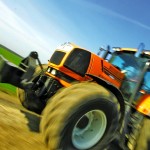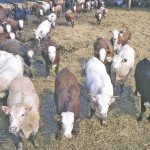Alberta Agriculture and Forestry has issued its latest crop report with conditions to July 19. This is an abbreviated version; click here for the full report and tables by region. With significant rains across the province, particularly in the South and Central Regions over the past two weeks, most of the agricultural lands in Alberta

Most Alberta crops in good to excellent condition

Salvaging hail-damaged crops
Storm damage to crops can result in problems with nitrate accumulations, especially if the crops were heavily fertilized or manured in the spring to optimize yield. “With volatile weather comes storm damage and, for some producers, this means salvaging crops for feed,” says Andrea Hanson, beef extension specialist, Alberta Agriculture and Forestry, Airdrie. Hanson cautions

Don’t gamble by not aerating your canola
Uneven maturity means there’s more green seed this year, and that ups the risk of spoilage
You can lose a lot of money in a hurry, so watch for potential canola storage problems as fall transitions into early winter, says an Alberta provincial crop specialist. “Canola seed’s high oil content makes it very susceptible to deterioration in storage,” said Neil Whatley. “Safe, long-term canola storage is at or below eight per

Don’t gamble by not aerating your canola
Uneven maturity means there’s more green seed this year, and that ups the risk of spoilage
You can lose a lot of money in a hurry, so watch for potential canola storage problems as fall transitions into early winter, says a provincial crop specialist. “Canola seed’s high oil content makes it very susceptible to deterioration in storage,” said Neil Whatley. “Safe, long-term canola storage is at or below eight per cent

Moving equipment is a high-risk operation
There are many pitfalls that increase the chances of being in a serious accident
According to the Canadian Agricultural Injury Reporting (CAIR) program, 13 per cent of farm-related fatalities across Canada are traffic related, and most involved tractors. During the busy fall harvest season, farmers often travel long distances between fields, and this requires transporting equipment on public roads throughout rural Alberta. Farm equipment is oversized and slow compared

New calculator assesses financial risk for cattle operations
Can show how sensitive an operation is to different selling prices and cattle price insurance coverage levels
A new decision support tool to assist cattle producers in calculating their cost of production and risk exposure has been posted to Alberta Agriculture and Rural Development’s website. Rancher’s Risk and Return is an Excel spreadsheet calculator that takes an innovative approach to assessing the market price risk that cow-calf and feedlot producers continually face.Stripe rust survey update for southern Alberta
This week, Dr. Denis Gaudet and his crew at AAFC-Lethbridge surveyed 23 spring wheat fields from Cardston to Vulcan for stripe rust. Stripe rust was seen in 50 per cent of the fields with the average incidence ranging from trace to 5 per cent. In three fields, incidences ranged from 15-90 per cent but severities
Cold winter means paying extra attention to thin cows
There is a combination of factors challenging cattle producers this year. December was considerably colder than normal, and this colder weather has prompted a heavier-than-usual hair coat on many cattle. While cows appear to be in good condition, producers may find, with some hands-on evaluation or condition scoring, that many may actually be thin. “Another
“Exceptional” crop ratings in Alberta
Alberta Agriculture and Rural Development has released its biweekly crop report for July 24. The provincial summary follows. The full report is available alongside. Alberta has seen the return to more seasonal temperatures over the past several weeks following the hot weather experienced two weeks ago. Sporadic light and heavy showers were reported in all
Beware of baling hay too early in hot weather
An Alberta Agriculture beef specialist warns that hay needs to be completely cured before being baled. Recent high temperatures, resulting in quick drying conditions, have some producers heading out to bale within two to four days after cutting. If hay isn’t completely cured, there could be damage to the hay after being baled. “Moisture probes

